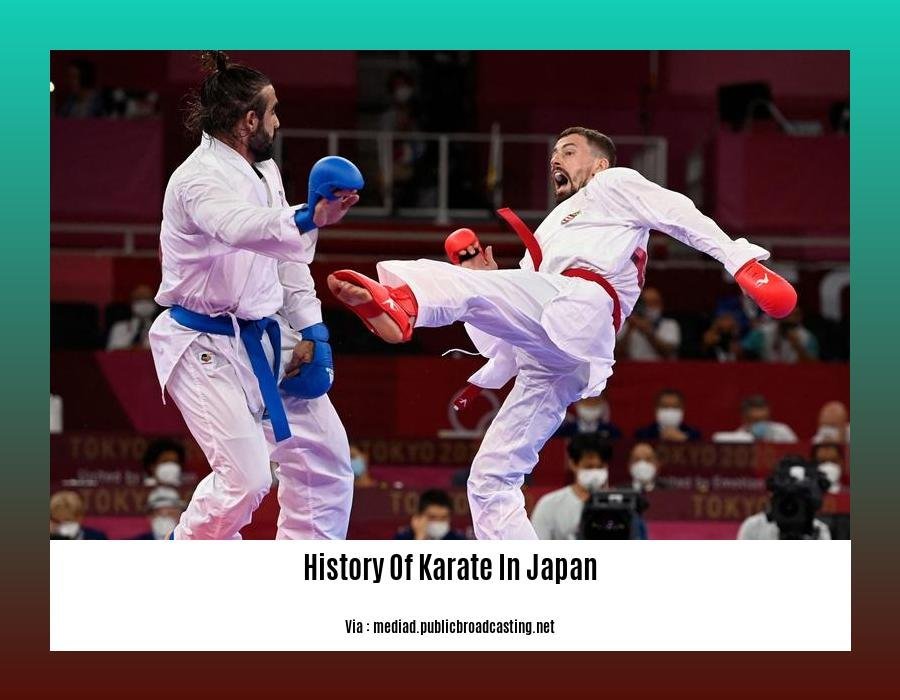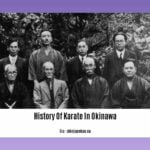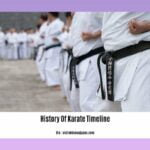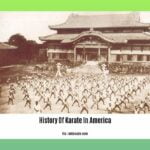Delve into the rich tapestry of [- The History of Karate in Japan: An In-Depth 鑑-] with an exploration that unravels the origins, evolution, and cultural significance of this iconic martial art. From its humble beginnings in the Ryukyu Islands to its global impact, this article will shed light on key historical figures, pivotal events, and the technical intricacies that have shaped the legacy of Japanese Karate. Prepare to embark on a journey through time, uncovering the fascinating narrative behind this cherished tradition.
Key Takeaways:
- Karate origins trace back to East Asia, systematized in Okinawa in the 17th century.
- Introduction to mainland Japan occurred in the 1920s.
- Various karate schools and systems developed, featuring unique techniques and training methods.
History Of Karate In Japan
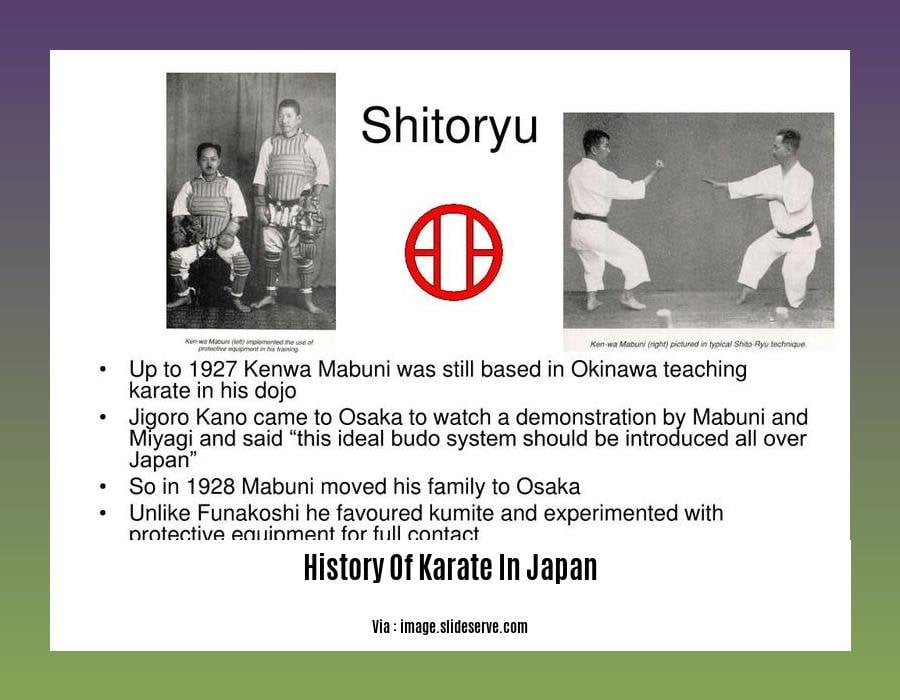
Karate, a martial art that originated in East Asia, found its way to Japan in the 17th century. Over the years, it has undergone significant evolution and adaptation, resulting in the emergence of various schools and systems.
Gichin Funakoshi: A Pivotal Figure
Gichin Funakoshi, a renowned karate master, played a crucial role in introducing karate to mainland Japan in the 1920s. He established the Shotokan style, which became one of the most influential schools of karate worldwide.
Distinctive Styles and Techniques
Karate in Japan evolved into various styles, each with its unique techniques and training methods. Some notable styles include:
- Shotokan: Known for its dynamic, linear movements and emphasis on power.
- Goju-ryu: Combines hard and soft techniques, focusing on close-range combat.
- Shito-ryu: Incorporates elements from various karate styles, resulting in a well-rounded approach.
Karate’s Cultural Impact
Karate has become an integral part of Japanese culture. It is not only a martial art but also a discipline that promotes physical fitness, mental fortitude, and self-control.
Training and Competition
Karate training typically involves a combination of physical exercises, kata (pre-arranged sequences of movements), and sparring. Practitioners strive to develop their speed, strength, coordination, and technique.
Karate competitions take various forms, including tournaments and demonstrations. Competitors showcase their skills in kata and kumite (sparring) to earn recognition and titles.
Contributions to Modern Martial Arts
Karate has significantly influenced the development of other martial arts, both in Japan and abroad. Its principles and techniques can be seen in styles such as Taekwondo, Kyokushin, and Brazilian Jiu-Jitsu.
In summary, The History Of Karate In Japan is a testament to its evolution, from its origins in East Asia to its introduction and subsequent development in Japan. Today, karate remains a vibrant martial art that continues to attract practitioners around the world.
Did you know the history of karate involves peaceful Chinese roots? Learn all about the History Of Karate Facts to see how this practice evolved over time and even made its way to America in the History Of Karate In America. If interested in more specific timelines, you can check out the History Of Karate Timeline that documents its important historical moments. Now that you know all about its background, understand the significance of the History Of Karate In Okinawa to its evolution. Last but not least, don’t miss the History Of Karate Belts if you want to unlock the fascinating meaning behind their colors and levels.
Development of Major Karate Styles
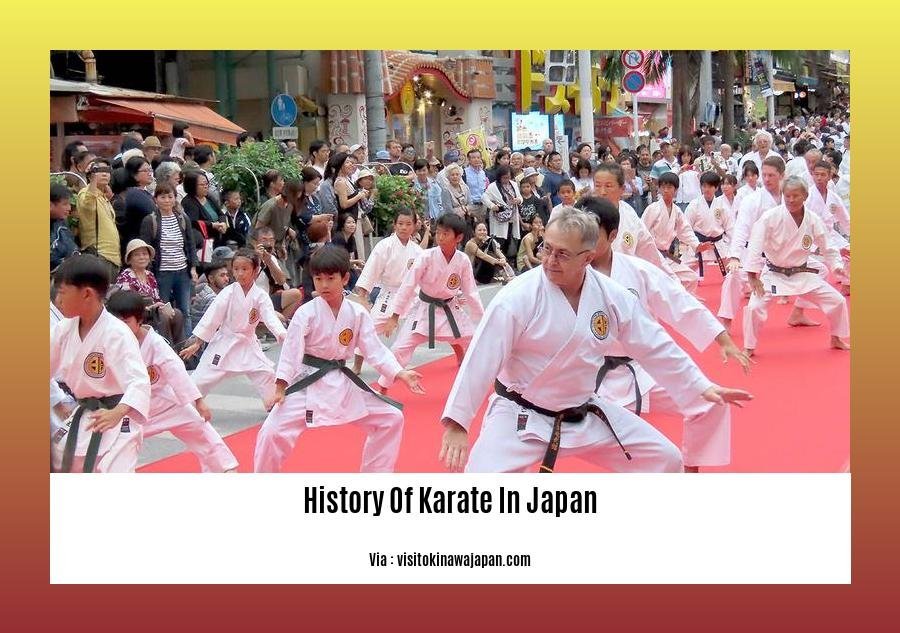
Do you want to know how karate evolved into the diverse styles it is today? Let’s delve into the history of karate in Japan and uncover the fascinating roots of its major styles.
Shotokan
In the early 20th century, Gichin Funakoshi introduced Shotokan, one of the most popular karate styles. It emphasizes speed, power, and long, linear techniques. Funakoshi’s teachings influenced numerous karate masters, including his son, Yoshitaka Funakoshi, and Masatoshi Nakayama.
Goju-ryu
Goju-ryu, developed by Chojun Miyagi, combines hard and soft techniques. It emphasizes circular movements, close-range combat, and a deep stance. Goju-ryu masters include Seikichi Toguchi and Morio Higaonna.
Shito-ryu
Kenwa Mabuni founded Shito-ryu, which blends elements of Shotokan and Goju-ryu. It emphasizes fluid movements, natural stances, and a combination of hard and soft techniques. Famous Shito-ryu masters include Kenzo Mabuni and Fumio Demura.
Wado-ryu
Hironori Ohtsuka developed Wado-ryu, which incorporates techniques from judo and aikido. It emphasizes body movement, evasion, and joint locks. Some notable Wado-ryu masters are Tatsuo Suzuki and Teruo Kono.
Key Takeaways:
- Karate originated in Okinawa and evolved into various styles in mainland Japan.
- Shotokan, Goju-ryu, Shito-ryu, and Wado-ryu are the major karate styles in Japan.
- Each style has its unique characteristics, techniques, and notable masters.
Citations:
Karate in Modern Japan
Karate has become deeply intertwined with Japanese culture, and in modern Japan, it continues to thrive.
Popularity and Cultural Significance:
- Karate has millions of practitioners in Japan, making it one of the most popular martial arts.
- Karate is taught in schools and community centers, promoting fitness and discipline.
- It is also a popular spectator sport, with tournaments attracting large crowds.
Influence on Japanese Society:
- Karate has shaped Japanese values, emphasizing respect, perseverance, and self-control.
- It has contributed to the development of Japan’s strong martial arts tradition.
- Karate practitioners are highly respected in Japanese society.
Modern Developments:
- **Karate in Modern Japan has seen the evolution of new styles and techniques.
- **Karate in Modern Japan has become more accessible, with classes and training available for people of all ages and abilities.
- **Karate in Modern Japan has expanded beyond its traditional roots, incorporating elements from other martial arts and sports.
Key Takeaways:
- Karate originated in Okinawa and was introduced to mainland Japan in the 1920s.
- **Karate in Modern Japan is a popular martial art with millions of practitioners.
- **Karate in Modern Japan has influenced Japanese culture and values.
- **Karate in Modern Japan has evolved with new styles and techniques.
- **Karate in Modern Japan is accessible to people of all ages and abilities.
Sources:
Legacy and Cultural Impact
From its humble beginnings as a Ryukyuan fighting system, karate has evolved into a global martial art and a source of cultural pride for Japan. Its journey has left an indelible mark on the country’s history, with profound implications for culture and tradition.
Embodiment of Samurai Spirit:
Karate embodies the samurai spirit, emphasizing discipline, honor, and respect. Its techniques are not just a means of self-defense; they’re a code of ethics and a way of life. By embodying these virtues, karate practitioners carry the legacy of the legendary Japanese warriors.
Integral Part of Japanese Identity:
Karate has become deeply ingrained in Japanese culture. It’s a symbol of national pride and heritage, featured in countless films, television shows, and anime. Its values of perseverance, self-control, and excellence resonate with Japanese people, shaping their outlook and identity.
Promoter of Health and Wellness:
Beyond its martial aspect, karate is also a valuable tool for promoting health and wellness. Its rigorous physical training strengthens the body, while its emphasis on mindfulness cultivates mental focus and inner peace. As such, karate has become an integral part of Japanese society, contributing to the nation’s overall well-being.
Key Takeaways:
- Karate originated in the Ryukyu Kingdom (present-day Okinawa) in the 17th century.
- Gichin Funakoshi introduced karate to mainland Japan in the 1920s, standardizing its name and techniques.
- Karate gained popularity in Japan and various styles emerged, including Shotokan, Goju, Shito, and Wado.
- Karate has become deeply embedded in Japanese culture, promoting fitness, mental discipline, and self-control.
- Training involves physical exercises, kata, and sparring, while competitions showcase skills in kata and kumite.
- Karate has influenced the development of other martial arts globally, including Taekwondo and Brazilian Jiu-Jitsu.
Relevant URL Sources:
FAQ
Q1: When did karate originate in Japan?
A1: Karate originated in the Ryukyu Kingdom (present-day Okinawa, Japan) in the early 17th century.
Q2: Who is credited with introducing karate to mainland Japan?
A2: Gichin Funakoshi is credited with introducing karate to mainland Japan in 1922.
Q3: What are some of the main styles of karate that emerged in Japan?
A3: Some of the main styles of karate that emerged in Japan include Shotokan, Goju, Shito, and Wado.
Q4: When was the Japan Karate Federation (JKF) established?
A4: The Japan Karate Federation (JKF) was established in 1957.
Q5: When did karate become an Olympic sport?
A5: Karate became an Olympic sport in 2021.
- Sept 31 Myth: Unveiling Calendar Secrets - March 18, 2025
- How Long & Till December 18, 2025: Accurate Countdown Guide - March 18, 2025
- Discover Japanese Artists: A Complete History - March 18, 2025
